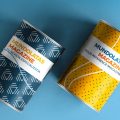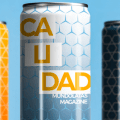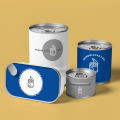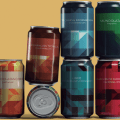Food and Beverage Metal Cans Market by Application
Key results
– The beverage segment is estimated to dominate the food & beverage metal cans market with a major share of around 66.8% in 2018, by value, and is projected to reach USD 24.6 billion by 2025.
– The high use of aluminium cans in carbonated soft drinks and alcoholic beverages such as beer and wine makes the beverage segment dominant in terms of application.
– The food segment is projected to grow at a compound annual growth rate of over 6.2%, by value, during the forecast period. This can be attributed to the growing demand for canned food across regions due to changing consumer preferences, busy work life and ready-to-eat habits.
Introduction
Metal can packaging is an important aspect of the food and beverage industry. They help to preserve the taste and nutritional value of the products. For the food and beverage industry, metal cans have wide applications. They provide convenient and protective packaging for different types of food and beverages, depending on the type of product packaging material selected. For food and beverages, steel and aluminium, respectively, are considered the best packaging materials. Metal food and beverage cans provide complete protection for fillings, as these cans are tamper evident and are suitable for room temperature storage. Therefore, the food and beverage industry will drive the growth of metal can packaging in the coming years.
FOOD & BEVERAGE METAL CANS MARKET SIZE, BY APPLICATION, 2020 VS. 2025 (USD BILLION)
FOOD & BEVERAGE METAL CANS MARKET SIZE, BY APPLICATION, 2020 VS. 2025 (BILLION UNITS)
FOOD & BEVERAGE METAL CANS MARKET SIZE, BY APPLICATION, 2018-2025 (USD BILLION)
FOOD & BEVERAGE METAL CANS MARKET SIZE, BY APPLICATION, 2018-2025 (BILLION UNITS)
Feeding
Processed foods require metal can packaging, which prolongs their shelf life and maintains their nutritional value. Food is the oldest application of metal cans. Food cans are usually made of steel. These cans are internally coated with tin to reduce filler contact with the steel. The tin coating reduces the chances of corrosion and helps to maintain the quality of the products. As consumer preferences change, technological advances are being made in the food can industry. Therefore, the growth of the food can industry drives the metal can market.
For the purpose of this study, the global food cans market has been segmented into five major sub-applications:
– Vegetable fruits
– Convenience food
– Pet food
– Meat and seafood
– Other food products
Fruits and vegetables
CANNED FRUITS AND VEGETABLES HAVE A LONGER SHELF LIFE
Canning fruits and vegetables helps preserve their nutritional value and prolongs their shelf life. In the recent past, canned foods have become an important part of the human diet in developed countries due to the high disposable incomes of people. Steel is mainly used for the manufacture of food cans. Technological innovations have found an alternative source for eating fruits and vegetables out of season. Ripe fruits are preferred for canning because over-ripe and under-ripe fruits give poor quality, wilt and degrade the quality of the products in canning. The most commonly consumed canned fruits are pineapples, grapes, cherries and blackberries. In addition, due to an increasingly busy work schedule, the demand for ready-to-cook vegetables has increased.
Convenience food
THE PORTABLE NATURE OF METAL CONTAINERS MAKES THEM A POPULAR CHOICE FOR FOOD PACKAGING.
The prepared food market is expected to witness growth in the coming years due to consumer interest in ready-to-eat (RTE) snacks and ready-to-serve (RTS) foods. Previously, plastic coated material was used for the packaging of prepared foods, which were considered hazardous to human health. Therefore, metal can packaging was adopted. The convenience food market is growing due to the nutritional value offered, attractive appearance, taste and texture. Demand for salad dressings, sauces, soups, ready-to-eat foods and spreads is increasing. This is attributed to the changing lifestyle of consumers, which acts as a major driver for the demand for convenience food and hence leads to the growth of the metal cans for convenience food products market.
Pet food
GROWING DEMAND FOR SUSTAINABLE FOOD PACKAGING SUPPORTS GROWTH OF METAL CANS
Pet food cans are significantly driving the growth of the metal can market. Pet nutrition is vital for pets to nourish their growth. Metal packaging therefore plays a vital role in maintaining the quality and nutritional value of food. Packaging plays an essential role in motivating pet owners’ choices.
Meat and seafood
METAL CANS HELP TO KEEP MEAT AND SEAFOOD PRODUCTS FRESH
Meat and seafood are rich sources of nutrients and vitamins. Meat and seafood packaging is essential to prolong their shelf life and maintain their high nutritional value. Due to growth in consumer disposable income and a busy schedule, the demand for packaged meat and seafood has increased, leading to the growth of the metal cans market for meat and seafood products. The meat market is growing steadily worldwide due to the increasing consumption of processed meat products and raw meat.
Other food products
For this study, other food products include baby food, bakery and confectionery products, dairy foods, and oils & fats.
Bakery and confectionery products are packaged in different shapes and sizes of metal tins. Generally, cookies, chocolates and biscuits are considered for metal containers. With the increasing demand for metal packaging, new technological innovations are being developed in the industry. Specialty cans are manufactured with 3D printing and embellishments to develop consumer interest. Therefore, developments in the food industry help the metal cans market to grow.
METAL FOOD CANS MARKET SIZE, BY REGION, 2018-2025 (USD BILLION)
METAL FOOD CANS MARKET SIZE, BY REGION, 2018-2025 (BILLION UNITS)
Based on region, North America dominated the metal food cans market in 2018 due to high presence of metal can manufacturers and ongoing trends for food and beverage convenience packaging.
Drinks
Beverage packaging is a very convenient and effective way to improve shelf life, maintain taste and texture and prevent spoilage. Metal beverage cans are a popular packaging choice for carbonated beverages, energy drinks and beer due to their ease of filling, convenience and recyclability. Therefore, innovations in the beverage industry enhance the growth of the metal cans market. People in North America and Europe are more interested in consuming different types of beverages. Busy work life and high disposable incomes are some of the important factors driving the growth of the beverage industry. Manufacturers are producing varieties of metal cans to attract the attention of consumers, which is driving the growth of the metal beverage cans market.
For the purpose of this study, the global beverage cans market has been segmented into four major sub-applications:
– Alcoholic beverages
– Soft drinks
– Sports and energy drinks
– Other beverages
FOOD & BEVERAGE METAL CANS MARKET SIZE, BY SUBSEGMENT, 2018-2025 (USD BILLION)
FOOD & BEVERAGE METAL CANS MARKET SIZE, BY SUBSEGMENT, 2018-2025 (BILLION UNITS)
ALCOHOLIC BEVERAGES
THE POPULARITY OF CANNED BEER IS THE MAIN DRIVER FOR METAL CANS IN THE ALCOHOLIC BEVERAGE SEGMENT.
Alcoholic beverages are generally packaged in 2-piece aluminum cans. Alcohols are further classified into three categories: beers, wines and spirits. Increasing consumption of alcoholic beverages has led to the growth of the beverage can market. Metal can packaging acts as a key strategy for beverage alcohol manufacturers to increase sales of their products in emerging markets. Technological innovations in beverage cans by manufacturers are driving the growth of this market. The rapid changes in consumer needs are also forcing can packaging companies to offer cost-effective solutions.
FIZZY DRINKS
METAL CANS MAKE SOFT DRINKS EASIER TO CARRY AROUND
Carbonated soft drinks contain carbonated water, steam, dyes, sweeteners and preservatives. Previously, carbonated soft drinks were packaged in glass bottles sealed with crown cork, which often resulted in the deterioration of the taste and texture of the beverages. The two main spoilage changes that occur in carbonated beverages are loss of carbonation and rancidification of essential flavouring agents. These spoilage changes can be reduced by providing effective packaging. In recent years, due to an increase in the consumption of carbonated beverages, the metal packaging industry has experienced tremendous growth.
SPORTS AND ENERGY DRINK
METAL CANS WITH ATTRACTIVE PRINTS ARE GAINING TRACTION IN SPORTS AND ENERGY DRINK MARKETS
Sports and energy drinks play an important role in the life of an athlete. These drinks contain carbohydrates in the form of sugar, electrolytes, protein, vitamins and caffeine. Sports and energy drinks are part of the functional beverage market. With the change in consumer trends, new flavours have been introduced in these beverages. Aluminium is the most suitable metal for the packaging of sports and energy drinks. These cans come in different shapes and sizes, which are easy to handle. In addition, promotional cans for sports and energy drinks launched during marketing campaigns help drive the metal beverage cans market.
OTHER BEVERAGES
Other beverages covered in this market study include milk mixes, coffee drinks, yoghurt drinks, milk drinks and iced tea. These drinks are packaged in different varieties of cans, which can vary in shapes and sizes. Metal containers help maintain the taste and freshness of these beverages; thus, resulting in relentless sales. Metal containers are considered suitable for these beverages.
METAL BEVERAGE CANS MARKET SIZE, BY REGION, 2018-2025 (USD BILLION)
METAL BEVERAGE CANS MARKET SIZE, BY REGION, 2018-2025 (USD BILLION)
North America dominated the metal beverage cans market in 2018, owing to higher production and consumption of carbonated beverages regionally. On the other hand, the Asia Pacific region is projected to grow at the highest CAGR of 6.8%, by value, during the forecast period, owing to changing consumer lifestyles and increasing adoption rate of sustainable packaging.























0 Comments